 W
WThe Age of Sail is a period that lasted at the latest from the mid-16th to the mid-19th centuries, in which the dominance of sailing ships in global trade and warfare cumulated, particularly marked by the introduction of naval artillery, and ultimately reached its highest extent at the advent of the analogue Age of Steam. Enabled by the advances of the related Age of Navigation, it is identified as a distinctive element of the early modern period and the Age of Discovery. Especially in context of the latter, it refers to a more particular Eurocentric Age of Sail, while generally the Age of Sail is the culminating period of a long intercontinental history of sailing.
 W
WBālijātrā, pronounced [bali dʒat̪ɾa], literally means Voyage to Bali is the major Boita Bandana festival held at Cuttack on Kartik Purnima. It is considered to be one of Asia's largest open trade fair. This festival is held in Odisha, in the city of Cuttack at Gadagadia Ghata of the Mahanadi river, to mark the day when ancient Sadhabas would set sail to distant lands of Bali, as well as Java, Sumatra, Borneo, and Sri Lanka for trade and cultural expansion. To commemorate this, the festival is celebrated every year from the day of Kartika Purnima according to the Odia calendar.
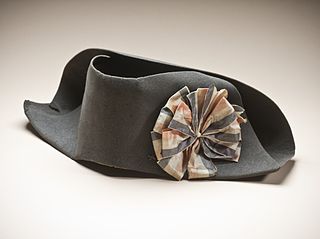 W
WThe bicorne or bicorn (two-cornered) is a historical form of hat widely adopted in the 1790s as an item of uniform by Europe and American army and naval officers. Most generals and staff officers of the Napoleonic period wore bicornes, which survived as widely-worn full-dress headdress until the 20th century.
 W
WBig Joys, Small Sorrows is a 1986 Japanese film directed by Keisuke Kinoshita, revisiting his melancholic earlier work, Times of Joy and Sorrow (1957), of a lighthouse keeper and the transient lifestyle he and his family endure. Shot at 10 different lighthouses, four temples, and various scenic locations, spanning the length of Japan from Kyushu to Hokkaido, the film serves a secondary purpose as an insightful time capsule travelogue of early 1980s Japan.
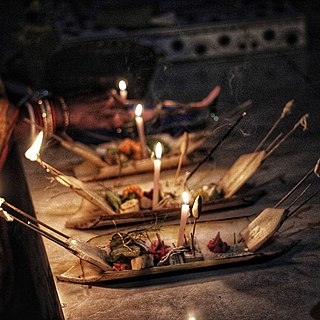 W
WBoita Bandana also known as Danga Bhasa, is a traditional Odia festival celebrated annually throughout Odisha, India. The name could be translated as "to float ritual boats and worshipping with lighted lamp" and comes from the tradition of making decorated boats, which are then floated on a river as a symbolic gesture of their ancestors' voyage.
 W
WA bucket hat is a hat with a wide, downward-sloping brim. Typically, the hat is made from heavy-duty cotton fabric such as denim or canvas, or heavy wool such as tweed, sometimes with metal eyelets placed on the crown of the hat for ventilation.
 W
WCanvas is an extremely durable plain-woven fabric used for making sails, tents, marquees, backpacks, shelters, as a support for oil painting and for other items for which sturdiness is required, as well as in such fashion objects as handbags, electronic device cases, and shoes. It is also popularly used by artists as a painting surface, typically stretched across a wooden frame.
 W
WCapt. John Jeffries Burial Marker is an historic burial monument in the cemetery at Scullville Bible Church in Egg Harbor Township, New Jersey, along County Route 559 near Somers Point. It was built in 1887 and added to both the New Jersey Register of Historic Places and the National Register of Historic Places in 1984.
 W
W"The captain goes down with the ship" is a maritime tradition that a sea captain holds ultimate responsibility for both their ship and everyone embarked on it, and in an emergency will either save those on board or die trying. Although often connected to the sinking of RMS Titanic in 1912 and its captain, Edward J. Smith, the tradition precedes Titanic by at least 11 years. In most instances, the captain forgoes their own rapid departure of a ship in distress, and concentrates instead on saving other people. It often results in either the death or belated rescue of the captain as the last person on board.
 W
WThe Charlotte Medal is a silver medallion, 74 millimetres (2.9 in) in diameter, depicting the voyage of the convict transport Charlotte, with the First Fleet, to Sydney, New South Wales, Australia. Its obverse depicts the ship and the reverse is inscribed with a description of the journey. Struck by convict Thomas Barrett upon arriving in Botany Bay aboard Charlotte in January 1788, the medal is said to be the first work of Australian colonial art. Within a month, Barrett became the first person to be executed in the new colony.
 W
WA "clean sweep" for a naval vessel refers to having "swept the enemy from the seas," a completely successful mission. It is traditionally indicated by hanging a broom from a mast or lashing it to the periscope of a submarine.
 W
WDressing overall consists of stringing international maritime signal flags on a ship from stemhead to masthead, from masthead to masthead and then down to the taffrail. It is a sign of celebration, and is done for occasions, anniversaries, and events, whether national, local or personal.
 W
WAn ensign is the national flag flown on a vessel to indicate nationality. The ensign is the largest flag, generally flown at the stern (rear) of the ship while in port. The naval ensign, used on warships, may be different from the civil ensign or the yacht ensign. Large versions of naval ensigns called battle ensigns are used when a warship goes into battle. The ensign differs from the jack, which is flown from a jackstaff at the bow of a vessel.
 W
WAn eyepatch is a small patch that is worn in front of one eye. It may be a cloth patch attached around the head by an elastic band or by a string, an adhesive bandage, or a plastic device which is clipped to a pair of glasses. It is often worn by people to cover a lost or injured eye, but it also has a therapeutic use in children for the treatment of amblyopia. Eyepatches used to block light while sleeping are referred to as a sleep mask. Eyepatches associated with pirates are a stereotype originating from fiction.
 W
WFelt is a textile material that is produced by matting, condensing and pressing fibers together. Felt can be made of natural fibers such as wool or animal fur, or from synthetic fibers such as petroleum-based acrylic or acrylonitrile or wood pulp-based rayon. Blended fibers are also common. Felt has special properties that allow it to be used for a wide variety of purposes. "It is fire-retardant and self-extinguishing; it dampens vibration and absorbs sound; and it can hold large amounts of fluid without feeling wet..."
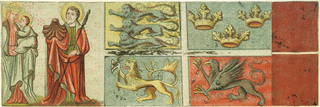 W
WA maritime flag is a flag designated for use on ships, boats, and other watercraft. Naval flags are considered important at sea and the rules and regulations for the flying of flags are strictly enforced. The flag flown is related to the country of registration: so much so that the word "flag" is often used symbolically as a synonym for "country of registration".
 W
WA fleet review or naval review is an event where a gathering of ships from a particular navy is paraded and reviewed by a reigning head of state and/or other official civilian and military dignitaries. A number of national navies continue to hold fleet reviews. Fleet reviews may also include participants and warships from multiple navies.
 W
WGrog is any of a variety of psychoactive beverages, mostly alcoholic beverages. The word originally referred to rum diluted with water, which British Vice-Admiral Edward Vernon introduced into the naval squadron he commanded in the West Indies on 21 August 1740. Vernon wore a coat of grogram cloth and was nicknamed Old Grogram or Old Grog. The Merriam–Webster Collegiate Dictionary, which agrees with this story of the word's origin, states that the word grog was first used in this sense in 1770, though other sources cite 1749. In modern times, the term grog has had a variety of meanings in a number of different cultures.
 W
WHardtack is a simple type of biscuit or cracker made from flour, water, and sometimes salt. Hardtack is inexpensive and long-lasting. It is used for sustenance in the absence of perishable foods, commonly during long sea voyages, land migrations, and military campaigns. Along with salt pork, hardtack was a standard ration for many militaries and navies throughout the 17th, 18th, and 19th centuries.
 W
WA hook is a hand tool used for securing and moving loads. It consists of a round wooden handle with a strong metal hook about 8" long projecting at a right angle from the center of the handle. The appliance is held in a closed fist with the hook projecting between two fingers.
 W
WA jack is a flag flown from a short jackstaff at the bow (front) of a vessel, while the ensign is flown on the stern (rear). Jacks on bowsprits or foremasts appeared in the 17th century. A country may have different jacks for different purposes, especially when the naval jack is forbidden to other vessels. The United Kingdom has an official civil jack; the Netherlands has several unofficial ones. In some countries, ships of other government institutions may fly the naval jack, e.g. the ships of the United States Coast Guard and the National Oceanic and Atmospheric Administration in the case of the US jack. Certain organs of the UK's government have their own departmental jacks. Commercial or pleasure craft may fly the flag of an administrative division or municipality at the bow. Merchant ships may fly a house flag. Yachts may fly a club burgee or officer's flag or the owner's private signal at the bow. Practice may be regulated by law, custom, or personal judgment.
 W
WA kerchief, also known as a bandana or bandanna, is a triangular or square piece of cloth tied around the head, face or neck for protective or decorative purposes. The popularity of head kerchiefs may vary by culture or religion, and may vary among Orthodox Jewish and Orthodox Christian, Catholic, Amish, and Muslim people.
 W
WKnee-high boots are boots that rise to the knee, or slightly thereunder or over. They are generally tighter around the leg shaft and ankle than at the top. Originally made of leather, versions made of a synthetic rubber, they are used by fishermen, dairy workers, stable hands, duck hunters, clammers, etc. to protect the feet from water, mud, manure, etc. and to provide traction on slippery surfaces. Most slip on, but there are varieties with buckles and those that lace up.
 W
WA knit cap, originally of wool, is designed to provide warmth in cold weather. Typically, the knit cap is of simple, tapering constructions, though many variants exist.
 W
WThe lighthouse and naval vessel urban legend describes an encounter between a large naval ship and what at first appears to be another vessel, with which the ship is on a collision course. The naval vessel, usually identified as of the United States Navy or Royal Navy and generally described as a battleship or aircraft carrier, requests that the other ship change course. The other party responds that the naval vessel should change course, whereupon the captain of the naval vessel reiterates the demand, identifying himself and the ship he commands and sometimes making threats. This elicits a response worded as "I'm a lighthouse. Your call", a punchline which has become shorthand for the entire anecdote.
 W
WMaple butter, also known as maple cream or maple spread, is a confection made from maple syrup, by heating the syrup to approximately 112 °C (234 °F), cooling it to around 52 °C (126 °F), and beating it until it reaches a smooth consistency. It is usually made from Grade A Light Amber syrup, and is a light tan color.
 W
WMaple syrup is a syrup usually made from the xylem sap of sugar maple, red maple, or black maple trees, although it can also be made from other maple species. In cold climates, these trees store starch in their trunks and roots before winter; the starch is then converted to sugar that rises in the sap in late winter and early spring. Maple trees are tapped by drilling holes into their trunks and collecting the sap, which is processed by heating to evaporate much of the water, leaving the concentrated syrup. Most trees can produce 20 to 60 litres of sap per season.
 W
WMarine art or maritime art is a form of figurative art that portrays or draws its main inspiration from the sea. Maritime painting is a genre that depicts ships and the sea—a genre particularly strong from the 17th to 19th centuries. In practice the term often covers art showing shipping on rivers and estuaries, beach scenes and all art showing boats, without any rigid distinction - for practical reasons subjects that can be drawn or painted from dry land in fact feature strongly in the genre. Strictly speaking "maritime art" should always include some element of human seafaring, whereas "marine art" would also include pure seascapes with no human element, though this distinction may not be observed in practice.
 W
WA mariner's cap, variations of which are known as skipper cap, Greek fisherman's cap, fiddler cap or Breton cap, Lenin cap and Mao cap, is a soft, flat-topped cap with a small visor, usually made from black or navy blue wool felt, but also occasionally from corduroy or blue denim. It is distinguished from similar caps, such as the peaked cap and maciejówka, by its soft, unstructured crown. It is often associated with seamanship and maritime settings, especially fishing, yachting and recreational sailing. It has become popular amongst the public in general, rather than staying isolated as an occupational hat. One example of it being put in prominence in popular culture was when it was worn by John Lennon during the British Invasion of the mid-1960s.
 W
WA monkey jacket is a waist length jacket tapering at the back to a point. Use of the term has been dated to the 1850s onwards.
 W
WThe Monmouth cap was an item of woollen headgear fashionable between the 15th and 18th centuries, and associated with the town of Monmouth in South East Wales. The knitted round caps were used by both soldiers and sailors, and they were widely exported.
 W
WMystic Seaport Museum or Mystic Seaport: The Museum of America and the Sea in Mystic, Connecticut is the largest maritime museum in the United States. It is notable for its collection of sailing ships and boats and for the re-creation of the crafts and fabric of an entire 19th-century seafaring village. It consists of more than 60 historic buildings, most of them rare commercial structures moved to the 19-acre (0.077 km2) site and meticulously restored.
 W
WA naval tradition is a tradition that is, or has been, observed in one or more navies.
 W
WSeveral nations observe or have observed a Navy Day to recognize their navy.
 W
WA neckerchief, sometimes called a necker, kerchief or scarf, is a type of neckwear associated with those working or living outdoors, including farm labourers, cowboys and sailors. It is most commonly still seen today in the Scouts, Girl Guides and other similar youth movements. A neckerchief consists of a triangular piece of cloth or a rectangular piece folded into a triangle. The long edge is rolled towards the point, leaving a portion unrolled. The neckerchief is then fastened around the neck with the ends either tied or clasped with a slide or woggle.
 W
WNew England is a region comprising six states in the Northeastern United States: Connecticut, Maine, Massachusetts, New Hampshire, Rhode Island, and Vermont. It is bordered by the state of New York to the west and by the Canadian provinces of New Brunswick to the northeast and Quebec to the north. The Atlantic Ocean is to the east and southeast, and Long Island Sound is to the southwest. Boston is New England's largest city, as well as the capital of Massachusetts. Greater Boston is the largest metropolitan area, with nearly a third of New England's population; this area includes Worcester, Massachusetts, Manchester, New Hampshire, and Providence, Rhode Island.
 W
WThe peaked cap, service cap, barracks cover or combination cap is a form of headgear worn by the armed forces of many nations, as well as many uniformed civilian organisations such as law enforcement agencies and fire departments. It derives its name from its short visor, or peak, which was historically made of polished leather but increasingly is made of a cheaper synthetic substitute.
 W
WPine tar is a form of tar produced by the high temperature carbonization of pine wood in anoxic conditions. The wood is rapidly decomposed by applying heat and pressure in a closed container; the primary resulting products are charcoal and pine tar.
 W
WRopework or marlinespike seamanship are traditional umbrella terms for a skillset spanning the use, maintenance, and repair of rope. Included are tying knots, splicing, making lashings, whippings, and proper use and storage of rope.
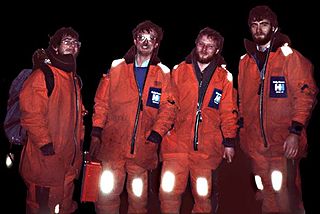 W
WSailing wear is a type of clothing for sailing. It protects the sailor from water and insulates the body on board a vessel.
 W
WA sailor cap is a round, flat visorless hat worn by sailors in many of the world's navies. A tally, an inscribed black silk ribbon, is tied around the base which usually bears the name of a ship or a navy. Many navies tie the tally at the rear of the cap and let the two ends hang down to the shoulders as decorative streamers. In the Royal Navy the tally is tied off in a bow over the left ear and in the early 20th century it was customary when going on shore leave to tie a small coin in the bow to make it stand out. In wartime, as a security measure, many navies replace the name of the ship with a generic title. The cap may be further embellished with a badge, cockade or other accessory. Visorless caps of this kind began to be worn in the mid 19th century.
 W
WA sailor hat is a brimmed straw hat similar to those historically worn by nineteenth century sailors before the sailor cap became standard. It is very close in appearance to the masculine boater, although "sailors" as worn by women and children have their own distinct design, typically flat-crowned, wide-brimmed and with a dark ribbon band extending into streamers hanging off the brim. Such hats could also be made in felt as an alternative to straw.
 W
WA sailor suit is a uniform traditionally worn by enlisted seamen in a navy or other governmental sea services. It later developed into a popular clothing style for children, especially as dress clothes.
 W
WA sailor's valentine is a form of shellcraft, a type of mostly antique souvenir, or sentimental gift made using large numbers of small seashells. These were originally made between 1830 and 1890, and they were designed to be brought home from a sailor's voyage at sea and given to the sailor's loved one or loved ones. Sailor valentines are typically octagonal, glass fronted, hinged wooden boxes ranging from 8 to 20 inches in width, displaying intricate symmetrical designs composed entirely of small sea shells of various colors glued onto a backing. Patterns often feature a centerpiece such as a compass rose or a heart design, hence the name, and in some cases the small shells are used to spell out a motto or sentimental message.
 W
WA Sailortown is a district in seaports that catered to transient seafarers. These districts frequently contained boarding houses, public houses, brothels, tattoo parlours, print shops, shops selling nautical equipment, and religious institutions offering aid to seamen; usually there was also a police station, a magistrate's court and a shipping office. Because it took several days, in the past, to unload ships, crews would spend this time in sailortown. These were "generic locations—international everyplaces existing in nearly every port." Cecily Fox Smith wrote that 'dockland, strictly speaking, is of no country—or rather it is of all countries'". Sailortowns were places where local people, immigrants, social and religious reformers, and transitory sailors met.
 W
WSalt pork is salt-cured pork. It is usually prepared from pork belly, or, more rarely, fatback. Salt pork typically resembles uncut side bacon, but is fattier, being made from the lowest part of the belly, saltier, as the cure is stronger and performed for longer, and never smoked.
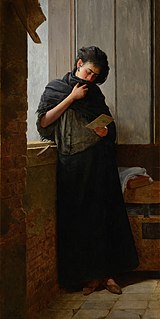 W
WSaudade is a deep emotional state of nostalgic or profound melancholic longing for something or someone that one cares for and/or loves. Moreover, it often carries a repressed knowledge that the object of longing might never be had again. It is the recollection of feelings, experiences, places, or events that once brought excitement, pleasure, and well-being, which now trigger the senses and make one experience the pain of separation from those joyous sensations. Saudade describes a feeling both happy and sad, and might be most closely related to the English expression ‘bitter sweet’.
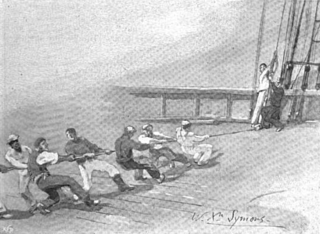 W
WA sea shanty, chantey, or chanty is a genre of traditional folk song that was once commonly sung as a work song to accompany rhythmical labor aboard large merchant sailing vessels. They were found mostly on British and other European ships, and some had roots in lore and legend. The term shanty most accurately refers to a specific style of work song belonging to this historical repertoire. However, in recent, popular usage, the scope of its definition is sometimes expanded to admit a wider range of repertoire and characteristics, or to refer to a "maritime work song" in general.
 W
WSeamanship is the art, knowledge and competence of operating a ship, boat or other craft on water. The Oxford Dictionary states that seamanship is "The skill, techniques, or practice of handling a ship or boat at sea."
 W
WThe Shenandoah is a 108-foot (33 m) topsail schooner built in Maine in 1964. Operating as a cruise ship and educational vessel in the waters of Vineyard Haven Harbor, Martha's Vineyard, Massachusetts, she is claimed to be the only schooner of her size and topsail rig without an engine within the world.
 W
WA ship chandler is a retail dealer who specializes in providing supplies or equipment for ships.
 W
WShoe buckles are fashion accessories worn by men and women from the mid-17th century through the 18th century to the 19th century. Shoe buckles were made of a variety of materials including brass, steel, silver or silver gilt, and buckles for formal wear were set with diamonds, quartz or imitation jewels.
 W
WA Sou'wester is a traditional form of collapsible oilskin rain hat that is longer in the back than the front to protect the neck fully. A gutter front brim is sometimes featured.
 W
WSpruce beer is a beverage flavored with the buds, needles, or essence of spruce trees. Spruce beer can refer to either alcoholic or non-alcoholic beverages.
 W
WStriking the colors—meaning lowering the flag that signifies a ship's or garrison's allegiance—is a universally recognized indication of surrender, particularly for ships at sea. For a ship, surrender is dated from the time the ensign is struck.
 W
WTimes of Joy and Sorrow, The Lighthouse, or 喜びも悲しみも幾歳月 , is a 1957 color Japanese film directed by Keisuke Kinoshita, who shot on location at 10 different lighthouses throughout Japan, including opening scenes at Kannonzaki, the site of the country's first lighthouse.
 W
WThe tricorne or tricorn is a style of hat that was popular during the 18th century, falling out of style by 1800, though actually not called a "tricorne" until the mid-19th century. During the 18th century, hats of this general style were referred to as "cocked hats". At the peak of its popularity, the tricorne varied greatly in style and size, and was worn not only by the aristocracy, but also as common civilian dress, and as part of military and naval uniforms. Typically made from animal fiber, the more expensive being of beaver-hair felt and the less expensive of wool felt, the hat's most distinguishing characteristic was that three sides of the brim were turned up (cocked) and either pinned, laced, or buttoned in place to form a triangle around the crown. The style served two purposes: first, it allowed stylish gentlemen to show off the most current fashions of their wigs, and thus their social status; and secondly, the cocked hat, with its folded brim, was much smaller than other hats, and therefore could be more easily tucked under an arm when going inside a building, where social etiquette dictated that a gentleman should remove his hat. Tricornes with laced sides could have the laces loosened and the sides dropped down to provide better protection from the weather, sun, and rain.
 W
WNational Maritime Day is a United States holiday created to recognize the maritime industry. It is observed on May 22, the date in 1819 that the American steamship Savannah set sail from Savannah, Georgia on the first ever transoceanic voyage under steam power. The holiday was created by the United States Congress on May 20, 1933.
 W
WThe Jolly Roger is a symbol that has been used by submarines, primarily those of the Royal Navy Submarine Service and its predecessors. The practice came about during World War I: remembering comments by First Sea Lord Admiral Sir Arthur Wilson, who complained that submarines were "underhanded, unfair, and damned un-English" and that personnel should be hanged as pirates, Lieutenant Commander Max Horton began flying the flag after returning from successful patrols. Initially, Horton's submarine HMS E9 flew an additional flag after each successful patrol, but when there was no room for more, the practice was changed to a single large flag, onto which symbols indicating the submarine's achievements were sewn.
 W
WThe Wellington boot was originally a type of leather boot adapted from Hessian boots, a style of military riding boot. They were worn and popularised by Arthur Wellesley, 1st Duke of Wellington. The "Wellington" boot became a staple of practical foot wear for the British aristocracy and middle class in the early 19th century. The name was subsequently given to waterproof boots made of rubber and they are no longer associated with a particular class. They are now commonly used for a range of agricultural and outdoors pursuits.